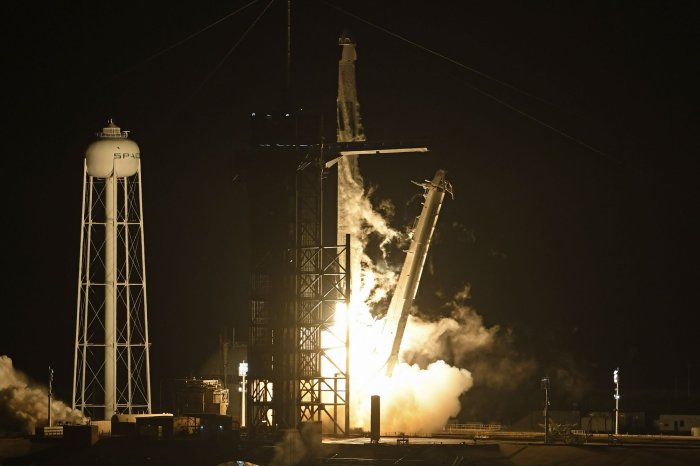1 of 5 | NASA astronaut Kayla Barron, who planned to conduct a spacewalk Tuesday, smiles as she prepares for launch from Florida on Nov. 10. Photo by Joe Marino/UPI |
License Photo
ORLANDO, Fla., Nov. 30 (UPI) -- NASA delayed a spacewalk that was scheduled to occur Tuesday morning, to replace broken hardware outside the International Space Station, due to a warning about possible dangerous debris.
NASA had planned for Thomas Marshburn, 61, and Kayla Barron, 34, to exit the space station about 7:10 a.m. EST for more than six hours. The spacewalk would be Marshburn's fifth and Barron's first.
The spacewalk was scheduled as NASA grappled with increased risk of space debris that could damage the space station or astronaut spacesuits.
"NASA received a debris notification for the space station," the ISS tweeted early Tuesday. "Due to the lack of opportunity to properly assess the risk it could pose to the astronauts, teams have decided to delay the Nov. 30 spacewalk until more information is available."
The new concern follows a Russian anti-satellite test Nov. 14 that created more than 15,000 dangerous pieces of space trash. In its delay announcement, NASA did not specify whether the debris was related to the Russian test.
Because the explosion was so recent, NASA couldn't adequately track and map the debris before the spacewalk, Dana Weigel, NASA deputy manager of the space station, said in a press conference Monday.
Due to the uncertainty, NASA canceled several tasks the astronauts had planned to tackle to prepare for future spacewalks, Weigel said. The new debris boosted risk that a spacesuit could be punctured by about 7%, Weigel said.
"It will take a few months to get all of those [pieces] catalogued and into our normal debris-tracking process," she said.
When the spacewalk occurs, Marshburn will attach himself to a robotic crane outside the space station -- the Canadarm2 -- to provide him with leverage to work on the antenna. Astronaut Matthias Maurer of the European Space Agency will control the robotic arm from inside the space station.
NASA uses multiple communication channels to control the space station, its hardware and experiments and to talk to astronauts. The agency has a spare antenna attached to the exterior, to replace the faulty antenna.
The space station's international coalition has planned to support the facility only through 2028 -- or 2030 if international partners agree on an extension.
Barron, Marshburn and Maurer were launched into space aboard a SpaceX Falcon 9 rocket and Crew Dragon capsule Nov. 10 from Kennedy Space Center in Florida -- the company's fourth astronaut launch for NASA. The crew also included commander Raja Chari, 44.
The SpaceX Falcon 9 rocket launches NASA's third crew to the International Space Station at 9:03 p.m. November 10 from the Kennedy Space Center in Florida. Photo by Joe Marino/UPI |
License Photo
















